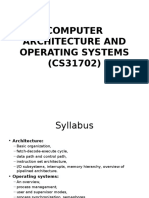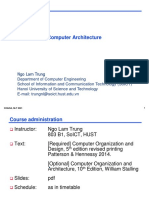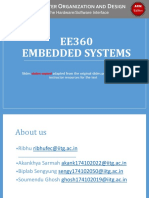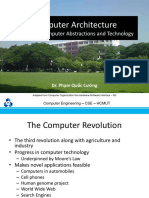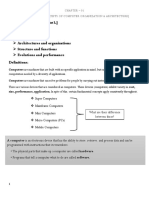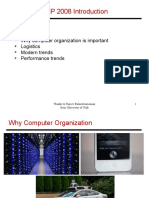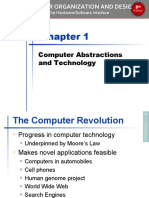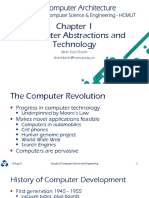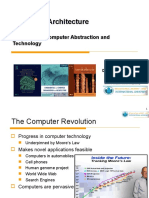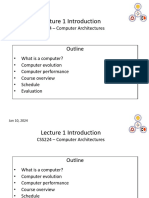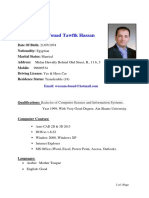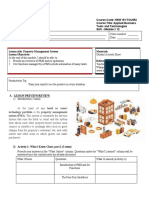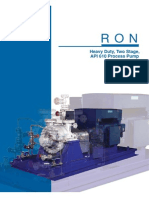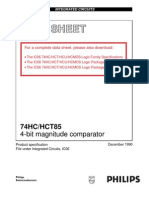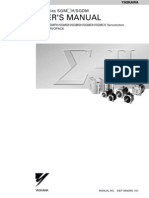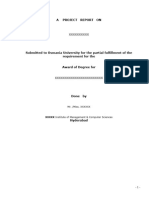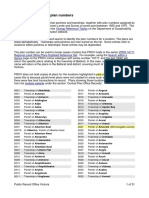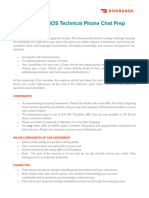0% found this document useful (0 votes)
77 views46 pagesCA Introduction
The document discusses computer architecture and organization. It covers topics like computer abstraction, performance evaluation, computer generations, and levels of program code. It also describes the hardware/software interface and how high-level programs are translated and executed on hardware.
Uploaded by
Nguyễn Trương Trường AnCopyright
© © All Rights Reserved
We take content rights seriously. If you suspect this is your content, claim it here.
Available Formats
Download as PDF, TXT or read online on Scribd
0% found this document useful (0 votes)
77 views46 pagesCA Introduction
The document discusses computer architecture and organization. It covers topics like computer abstraction, performance evaluation, computer generations, and levels of program code. It also describes the hardware/software interface and how high-level programs are translated and executed on hardware.
Uploaded by
Nguyễn Trương Trường AnCopyright
© © All Rights Reserved
We take content rights seriously. If you suspect this is your content, claim it here.
Available Formats
Download as PDF, TXT or read online on Scribd
/ 46







